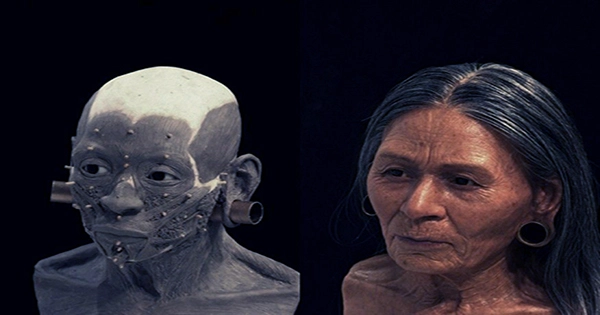This is the face of a “rolling stone” who spent his life roaming around medieval Scotland before (most likely) dying an untimely death after being abandoned for ages in the ruins of a Roman latrine. Archeologists examined the skeleton remains of nine adults and five children unearthed beneath a bathhouse at the ruined Roman fort in Cramond near Edinburgh, Scotland, using a variety of bioarchaeological techniques and isotopic data to piece together their story.
These bones are referred described as “bog bodies” not because they were discovered in a wetland’s acidic, low-oxygen environment, but because they were discovered in a bog, which is a toilet, sometimes known as a latrine, that was used by Roman soldiers when they occupied Scotland centuries ago. When the skeleton remains were discovered in 1975, it was presumed that they were from the 14th century CE, maybe victims of the Black Death. New radiocarbon dating, however, revealed that they were 800 years older, dating from the 6th century CE. This was a turbulent but little-understood period in British history, as evidenced by the skeletons’ physical makeup.
Isotopic study of their teeth, which was recently published in the journal Archaeological and Anthropological Sciences, revealed a startlingly rich history of these people’s life, including keen insights into their nutrition and geographic origins. Professor Kate Britton, senior author of the study and archeologist at the University of Aberdeen, stated in a statement that “food and water eaten during life leave a distinctive signature in the body that can be traced back to their input source, indicating nutrition and mobility patterns.”
“Tooth enamel, particularly from teeth formed between the ages of three and six, acts as small time capsules holding chemical information about where a person grew up,” Professor Britton added. Six of the people had chemical markers on their teeth that indicated they were born and raised in the Cramond area. However, an examination of one female revealed that some were from the West coast, while a male was raised in the Southern Highlands near Loch Lomond. This suggests that migration was far more prevalent in early medieval Scotland than previously thought.
“It is commonly considered that travel during this period would have been restricted due to the lack of roads that we have today and the political divisions that existed at the time. Dr. Orsolya Czére, post-doctoral researcher and principal author of the study, noted, “The investigation of the burials from Cramond, as well as other early medieval burial sites in Scotland, are revealing that it was not uncommon to be buried far from where you had originally grown up.” “Previous research has revealed that persons buried here had a high social rank, possibly even nobility.” “What we can conclude from our new analysis is that these were well-connected individuals whose lifestyles took them all over the country,” Dr. Czére continued.
This movement is likely to have resulted in a slew of new cultural innovations and genetic exchanges, as well as violent social confrontations. A woman and a young kid deposited in the Roman latrine appear to have received a strong blow to the head before death, indicating that some of these “bog bodies” likely died a terrible death. Regardless of their social standing, it’s safe to assume that some of this strange bunch of wanderers met a horrifying end.
















